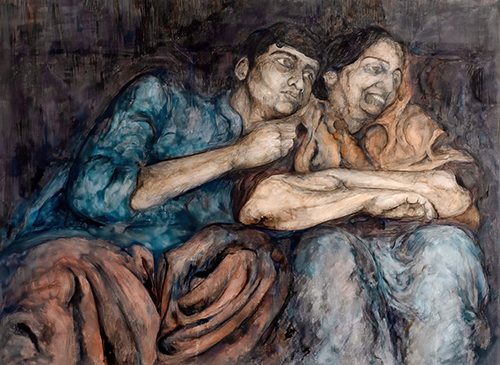
The catechism from which I drew my religious instruction as a child stated that a Christian sacrament was an “outward sign instituted by Jesus Christ to give us grace.”
Later on, in the seminary, the theology text we used on sacraments was written by Edward Schillebeeckx and he defined a sacrament in words to this effect: “A sacrament is anything that visibly, tangibly makes present or prolongs a saving action of God.”
hile both of those definitions are theologically very good, they are too abstract to, at times, give us a real sense of what precisely a sacrament is and where a sacrament is sometimes found.
prefer a more colloquial definition, one that simply defines a sacrament as “anything that gives skin to God.” What is meant by this?
There is a marvellous story about a four-year-old girl who woke up one night frightened, convinced that there were monsters and spooks in her room.
She ran to her parents’ bedroom.
Her mother, however, brought her back to her own room, put on several lights, showed the child that there was nothing to be afraid of, put her back to bed, calmed her, and finally left her with the words: “There is nothing to be afraid of. When I leave, you won’t be alone in the room. God will be here with you.”
But the young girl replied: “I know that God will be here with me, but I need someone in the room who has some skin!”
There is wisdom, and theology, to her response. As human beings we are creatures of the senses. We need something we can grasp tangibly, physically.
Thus, a God who is everywhere is, at a certain point, nowhere.
God, of course, already knows this and that is why we have been given God’s presence physically in sacrament. Understood in this sense then, there are more than seven sacraments.
Family life is, or at least it can be, a sacrament. Like the Eucharist, or any other sacrament, it too can give concrete flesh to God. How so?
For many of us, coming home from the hospital to join a family will be our first baptism, our family dwelling will be our primary church, our family table our primary place of Eucharist, our living room our first sanctuary, our marriage bed our deepest experience of Eucharist, and our reconciliation with each other after the pettiness and hurts of family life our ongoing sacrament of reconciliation.
It is there that the flow of the life that originates within God, and finds its perfection there, will flow through us to others.
As I was writing this reflection, the image of a river flowing over, under, and around rocks came to mind. Each of the rocks remains stationary and in place. However, the water radically affects each other – you cannot sit in the river and not get wet!
In a similar fashion, we as individuals cannot sit ‘in God’ and not get ‘graced.’


